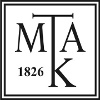Wittmann, Christopher and Besleaga, Iuliana and Mahmoudi, Soheil and Palamarciuc, Oleg and Balan-Porcarasu, Mihaela and Dascalu, Mihaela and Shova, Sergiu and Cazacu, Maria and Csontné Kiricsi, Mónika and Igaz, Nóra and Dömötör, Orsolya and Enyedy, Éva Anna and Dvoranova, Dana and Rapta, Peter and Arion, Vladimir B. (2025) Physical properties and cytotoxicity of Cu(ii) and Zn(ii) complexes with a TMS-substituted indolo[2,3-c]quinoline-derived Schiff base. DALTON TRANSACTIONS, 54 (19). pp. 7882-7898. ISSN 1477-9226
|
Text
Dalton_2025_Wittmann_TMS-indoloquinoline.pdf - Published Version Available under License Creative Commons Attribution. Download (3MB) | Preview |
Abstract
The incorporation of non-native chemical elements, such as silicon, into drug molecules has gained significant attention as a strategy to broaden the chemical space in medicinal chemistry and develop novel drug candidates. Traditionally, research has focused on the isosteric replacement of a carbon atom with silicon ("silicon switch") in known drug structures or the attachment of a trimethylsilyl (TMS) group to biologically active scaffolds. In this study, a TMS-substituted indoloquinoline-based Schiff base (HLTMS) and its corresponding metal complexes, Cu(HLTMS)Cl2 (1) and Zn(HLTMS)Cl2 (2), were synthesized and comprehensively characterized using elemental analysis, spectroscopic techniques (IR, UV-vis, 1H and 13C NMR for HLTMS and 2), ESI mass spectrometry and single-crystal X-ray diffraction (SC-XRD) for 1 and electron diffraction (ED) for 2. The attachment of the TMS group enhanced the lipophilicity of HLTMS, while complex formation with Cu(ii) substantially improved the antiproliferative activity. Exploitation of their intrinsic fluorescence to investigate cellular uptake and intracellular localization in cancer cells was impeded by limited solubility. Both HLTMS and 2 were found to generate reactive oxygen species under cell-free conditions in accord with their redox activity established by cyclic voltammetry. The photochemical activity of the indolo[2,3-c]quinoline-based proligand HLTMS and its complexes 1 and 2 has been disclosed. The compounds exhibited significant toxicity on various human cancer cells and disrupted the mitochondrial membrane potential, suggesting the contribution of mitochondrial dysfunction, triggered by HLTMS and its metal complexes, to their toxic effects. These findings highlight the potential of TMS-substituted Schiff bases as promising anticancer drug candidates.
| Item Type: | Article |
|---|---|
| Additional Information: | Funding Agency and Grant Number: Agentra na Podporu Vskumu a Vvoja [PNRR-III-C9-2023-I8-99/31.07.2023]; Ministry of Research, Innovation and Digitalization; National Recovery and Resilience Plan (Romania) [P31293-N37]; Austrian Science Fund (FWF) [APVV-23-0195]; Slovak Research and Development Agency (SRDA) [1/0422/24]; VEGA [TKP2021-EGA-32]; Distinguished Guest Scientist Fellowship Program of the Hungarian Academy of Sciences [TKP2021-EGA]; Ministry of Culture and Innovation of Hungary from the National Research, Development and Innovation Fund Funding text: This work was supported by a grant of the Ministry of Research, Innovation and Digitalization, project no. PNRR-III-C9-2023-I8-99/31.07.2023 within the National Recovery and Resilience Plan (Romania), by the Austrian Science Fund (FWF) via the grant no. P31293-N37 and was partially funded by the Slovak Research and Development Agency (SRDA) under the contract No. APVV-23-0195 and VEGA 1/0422/24. V. B. A. was supported by the Distinguished Guest Scientist Fellowship Program of the Hungarian Academy of Sciences. Project no TKP2021-EGA-32 has been implemented with the support provided by the Ministry of Culture and Innovation of Hungary from the National Research, Development and Innovation Fund, financed under the TKP2021-EGA funding scheme. The authors also thank the Developmental Therapeutics Program of the National Cancer Institute for performing cytotoxicity studies with selected compounds in the 60 cancer cell line panel. We thank Prof. Tim Gruene for electron diffraction measurements. |
| Uncontrolled Keywords: | LIGANDS; copper(II) complexes; ARENE COMPLEXES; RUTHENIUM; BEARING; FREE-RADICAL UNIT; SILICON ANALOG; |
| Subjects: | Q Science / természettudomány > QD Chemistry / kémia |
| SWORD Depositor: | MTMT SWORD |
| Depositing User: | MTMT SWORD |
| Date Deposited: | 11 Jun 2025 15:48 |
| Last Modified: | 11 Jun 2025 15:48 |
| URI: | https://real.mtak.hu/id/eprint/219912 |
Actions (login required)
 |
Edit Item |



